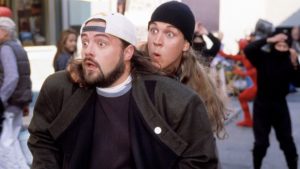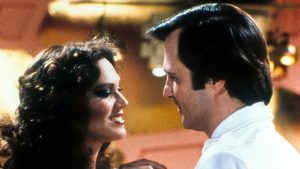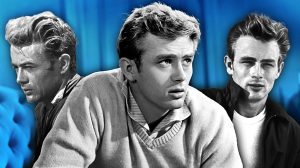
James Dean’s Legacy: Ranking His Essential Films
By Caroline Madden
James Dean, a cultural icon whose life was tragically cut short at just 24 in a car crash, left behind a mere trio of films that have profoundly impacted cinema. With his piercing gaze and a cigarette often perched between his lips, decked out in tight jeans and classic white tees, Dean established a brand of brooding allure that resonated deeply within Hollywood’s annals. Much like Marlon Brando, he embodied the tortured Method actor — however, his demeanor leaned more towards sensitivity than sheer brute strength. Beneath his tough persona lay a profound vulnerability that made his performances achingly relatable. He was not just a handsome fixture of tragedy but a character of world-weariness who moved and captivated audiences of the 1950s and subsequent generations. Here’s a closer look and ranking of the three films that immortalized his talent.
3. Giant (1956)
Directed by George Stevens, “Giant” spans over three hours as it narrates the story of a wealthy Texas rancher and his East Coast bride who struggles to adapt to her new rural life. The film, heavy with melodrama and exploring the tensions between cattle ranchers and oil tycoons, can often feel sluggish, particularly in today’s context. Although powerhouse performances by Rock Hudson and Elizabeth Taylor shine, the narrative of land disputes and greed feels somewhat tedious. Dean, occupying the role of a poor ranch hand who stumbles upon oil riches, may not dominate the screen time, but he leaves an impression with a character exuding youthful hope struggling against personal demons. “Giant” also provides a valuable commentary on racial tensions, especially its portrayal of the complexities surrounding a biracial grandchild in the Benedict family.
2. East of Eden (1955)
In “East of Eden,” directed by Elia Kazan and adapted from John Steinbeck’s novel, Dean emerges as a force of nature in the story of two siblings uncovering family secrets that fracture their relationships. Set against the backdrop of 1910s California, Dean’s portrayal of Cal brims with an intensity that surpasses even his celebrated performance in “Rebel Without a Cause.” His desperate yearning for paternal approval is palpable during the scenes with his father, Adam, revealing the deep-seated vulnerabilities within his character. Yet, in contrasting moments with Abra, Dean’s Cal finds glimmers of potential love. The film’s visuals encapsulate a nostalgic beauty, capturing the essence of family complexities that echo throughout human history.
- Rebel Without a Cause (1955)
“Rebel Without a Cause” remains a landmark film, pioneering a serious exploration of teenage turmoil. The narrative follows Jim, Judy, and Plato, three young individuals navigating emotional neglect from their parents and the chaos of youth. Dean, alongside Natalie Wood and Sal Mineo, delivers electric performances that highlight the delicate balance between innocence and heavy-heartedness. His portrayal of Jim encapsulates the frustration of adolescence — a raw plea for understanding from a generation that seems lost. An unforgettable scene showcases Dean’s explosive emotion as he exclaims his confusion to his parents. Director Nicholas Ray enhances this emotional depth with vibrant Technicolor cinematography, where bright reds and dynamic cityscapes bring the experience to life. “Rebel Without a Cause” not only encapsulates the 1950s ethos but also addresses themes of teenage resistance and disillusionment, resonating with audiences today. Dean’s status as the emblem of rebellious youth is both haunting and beautiful, marking the film as an essential piece of cinematic history.





